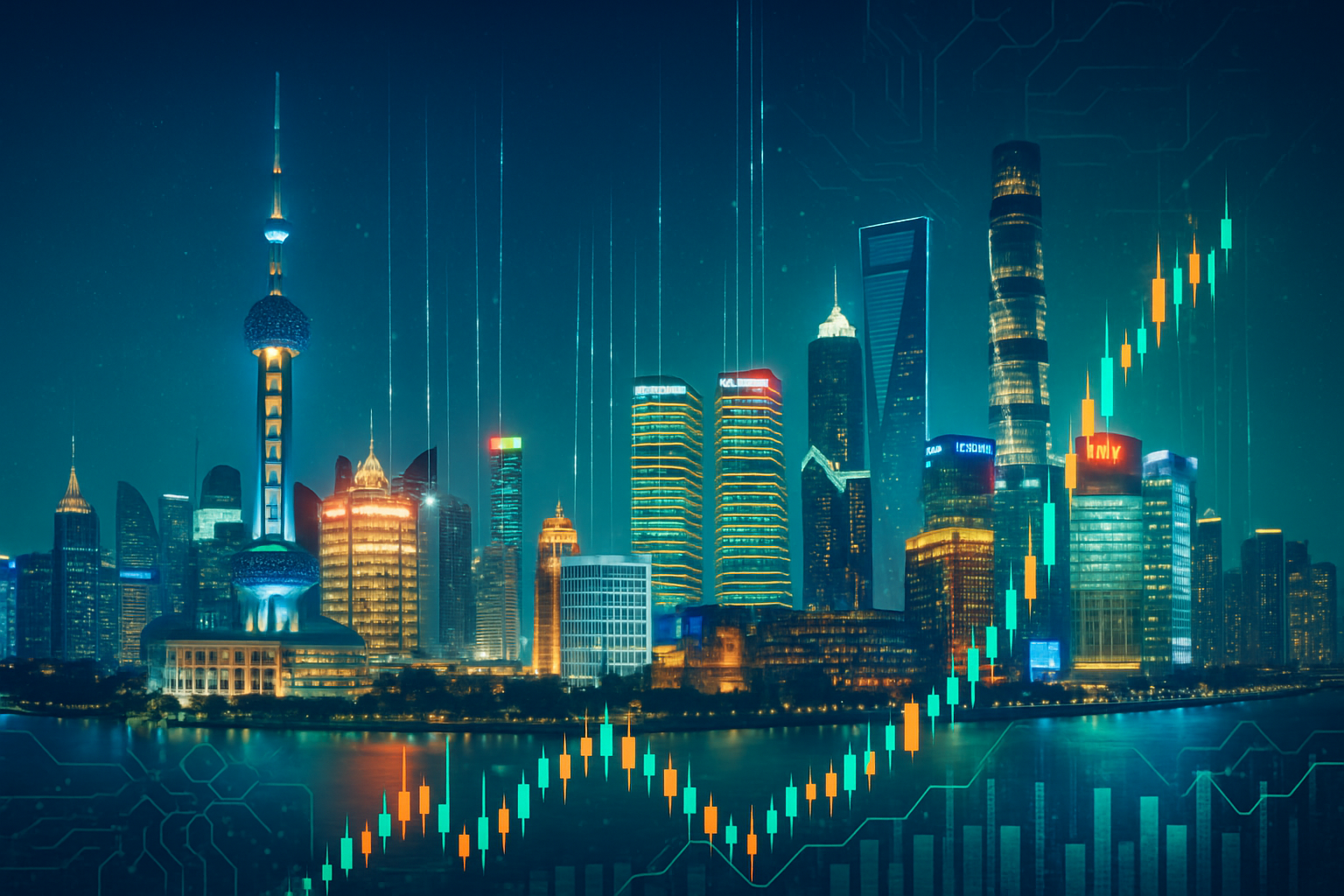Alibaba's (NYSE: BABA) Tongyi Lab has recently unveiled a groundbreaking addition to the generative artificial intelligence landscape: the Tongyi-MAI / Z-Image-Turbo model. This cutting-edge text-to-image AI, boasting 6 billion parameters, is engineered to generate high-quality, photorealistic images with unprecedented speed and efficiency. Released on November 27, 2024, Z-Image-Turbo marks a significant stride in making advanced AI image generation more accessible and cost-effective for a wide array of users and applications. Its immediate significance lies in its ability to democratize sophisticated AI tools, enable high-volume and real-time content creation, and foster rapid community adoption through its open-source nature.
The model's standout features include ultra-fast generation, achieving sub-second inference latency on high-end GPUs and typically 2-5 seconds on consumer-grade hardware. This rapid output is coupled with cost-efficient operation, priced at an economical $0.005 per megapixel, making it ideal for large-scale production. Crucially, Z-Image-Turbo operates with a remarkably low VRAM footprint, running comfortably on devices with as little as 16GB of VRAM, and even 6GB for quantized versions, thereby lowering hardware barriers for a broader user base. Beyond its technical efficiency, it excels in generating photorealistic images, accurately rendering complex text in both English and Chinese directly within images, and demonstrating robust adherence to intricate text prompts.
A Deep Dive into Z-Image-Turbo's Technical Prowess
Z-Image-Turbo is built on a sophisticated Scalable Single-Stream Diffusion Transformer (S3-DiT) architecture, comprising 30 transformer layers and a robust 6.15 billion parameters. A key technical innovation is its Decoupled-DMD (Distribution Matching Distillation) algorithm, which, combined with reinforcement learning (DMDR), facilitates an incredibly efficient 8-step inference pipeline. This is a dramatic reduction compared to the 20-50 steps typically required by conventional diffusion models to achieve comparable visual quality. This streamlined process translates into impressive speed, enabling sub-second 512×512 image generation on enterprise-grade H800 GPUs and approximately 6 seconds for 2048×2048 pixel images on H200 GPUs.
The model's commitment to accessibility is evident in its VRAM requirements; while the standard version needs 16GB, optimized FP8 and GGUF quantized versions can operate on consumer-grade GPUs with as little as 8GB or even 6GB VRAM. This democratizes access to professional-grade AI image generation. Z-Image-Turbo supports flexible resolutions up to 4 megapixels, with specific support up to 2048×2048, and offers configurable inference steps to balance speed and quality. Its capabilities extend to photorealistic generation with strong aesthetic quality, accurate bilingual text rendering (a notorious challenge for many AI models), prompt enhancement for richer outputs, and high throughput for batch generation. A specialized variant, Z-Image-Edit, is also being developed for precise, instruction-driven image editing.
What truly differentiates Z-Image-Turbo from previous text-to-image approaches is its unparalleled combination of speed, efficiency, and architectural innovation. Its accelerated 8-step inference pipeline fundamentally outperforms models that require significantly more steps. The S3-DiT architecture, which unifies text, visual semantic, and image VAE tokens into a single input stream, maximizes parameter efficiency and handles text-image relationships more directly than traditional dual-stream designs. This results in a superior performance-to-size ratio, allowing it to match or exceed larger open models with 3 to 13 times more parameters across various benchmarks, and earning it a high global Elo rating among open-source models.
Initial reactions from the AI research community and industry experts have been overwhelmingly positive, with many hailing Z-Image-Turbo as "one of the most important open-source releases in a while." Experts commend its ability to achieve state-of-the-art results among open-source models while running on consumer-grade hardware, making advanced AI image generation accessible to a broader user base. Its robust photorealistic quality and accurate bilingual text rendering are frequently highlighted as major advantages. Community discussions also point to its potential as a "super LoRA-focused model," ideal for fine-tuning and customization, fostering a vibrant ecosystem of adaptations and projects.
Competitive Implications and Industry Disruption
The release of Tongyi-MAI / Z-Image-Turbo by Alibaba (NYSE: BABA) is poised to send ripples across the AI industry, impacting tech giants, specialized AI companies, and nimble startups alike. Alibaba itself stands to significantly benefit, solidifying its position as a foundational AI infrastructure provider and a leader in generative AI. The model is expected to drive demand for Alibaba Cloud (NYSE: BABA) services and bolster its broader AI ecosystem, including its Qwen LLM and Wan video foundational model, aligning with Alibaba's strategy to open-source AI models to foster innovation and boost cloud computing infrastructure.
For other tech giants such as OpenAI, Google (NASDAQ: GOOGL), Meta (NASDAQ: META), Adobe (NASDAQ: ADBE), Stability AI, and Midjourney, Z-Image-Turbo intensifies competition in the text-to-image market. While these established players have strong market presences with models like DALL-E, Stable Diffusion, and Midjourney, Z-Image-Turbo's efficiency, speed, and specific bilingual strengths present a formidable challenge. This could compel rivals to prioritize optimizing their models for speed, accessibility, and multilingual capabilities to remain competitive. The open-source nature of Z-Image-Turbo, akin to Stability AI's approach, also challenges the dominance of closed-source proprietary models, potentially pressuring others to open-source more of their innovations.
Startups, in particular, stand to gain significantly from Z-Image-Turbo's open-source availability and low hardware requirements. This democratizes access to high-quality, fast image generation, enabling smaller companies to integrate cutting-edge AI into their products and services without needing vast computational resources. This fosters innovation in creative applications, digital marketing, and niche industries, allowing startups to compete on a more level playing field. Conversely, startups relying on less efficient or proprietary models may face increased pressure to adapt or risk losing market share. Companies in creative industries like e-commerce, advertising, graphic design, and gaming will find their content creation workflows significantly streamlined. Hardware manufacturers like Nvidia (NASDAQ: NVDA) and AMD (NASDAQ: AMD) will also see continued demand for their advanced GPUs as AI model deployment grows.
The competitive implications extend to a new benchmark for efficiency, where Z-Image-Turbo's sub-second inference and low VRAM usage set a high bar. Its superior bilingual (English and Chinese) text rendering capabilities offer a unique strategic advantage, especially in the vast Chinese market and for global companies requiring localized content. This focus on cost-effectiveness and accessibility allows Alibaba to reinforce its market positioning as a comprehensive AI and cloud services provider, leveraging its efficient, open-source models to encourage wider adoption and drive revenue to its cloud infrastructure and ModelScope platform. The potential for disruption is broad, affecting traditional creative software tools, stock photo libraries, marketing agencies, game development, and e-commerce platforms, as businesses can now rapidly generate custom visuals and accelerate their content pipelines.
Broader Significance in the AI Landscape
Z-Image-Turbo's arrival signifies a pivotal moment in the broader AI landscape, aligning with and accelerating several key trends. Foremost among these is the democratization of advanced AI. By significantly lowering the hardware barrier, Z-Image-Turbo empowers a wider audience—from independent creators and small businesses to developers and hobbyists—to access and utilize state-of-the-art image generation capabilities without the need for expensive, specialized infrastructure. This echoes a broader movement towards making powerful AI tools more universally available, shifting AI from an exclusive domain of research labs to a practical utility for the masses.
The model also epitomizes the growing emphasis on efficiency and speed optimization within AI development. Its "speed-first architecture" and 8-step inference pipeline represent a significant leap in throughput, moving beyond merely achieving high quality to delivering it with unprecedented rapidity. This focus is crucial for integrating generative AI into real-time applications, interactive user experiences, and high-volume production environments where latency is a critical factor. Furthermore, its open-source release under the Apache 2.0 license fosters community-driven innovation, encouraging researchers and developers globally to build upon, fine-tune, and extend its capabilities, thereby enriching the collaborative AI ecosystem.
Z-Image-Turbo effectively bridges the gap between top-tier quality and widespread accessibility, demonstrating that photorealistic results and strong instruction adherence can be achieved with a relatively lightweight model. This challenges the notion that only massive, resource-intensive models can deliver cutting-edge generative AI. Its superior multilingual capabilities, particularly in accurately rendering complex English and Chinese text, address a long-standing challenge in text-to-image models, opening new avenues for global content creation and localization.
However, like all powerful generative AI, Z-Image-Turbo also raises potential concerns. The ease and speed of generating convincing photorealistic images with accurate text heighten the risk of creating sophisticated deepfakes and contributing to the spread of misinformation. Ethical considerations regarding potential biases inherited from training data, which could lead to unrepresentative or stereotypical outputs, also persist. Concerns about job displacement for human artists and designers, especially in tasks involving high-volume or routine image creation, are also valid. Furthermore, the model's capabilities could be misused to generate harmful or inappropriate content, necessitating robust safeguards and ethical deployment strategies.
Compared to previous AI milestones, Z-Image-Turbo's significance lies not in introducing an entirely novel AI capability, as did AlphaGo for game AI or the GPT series for natural language processing, but rather in democratizing and optimizing existing capabilities. While models like DALL-E, Stable Diffusion, and Midjourney pioneered high-quality text-to-image generation, Z-Image-Turbo elevates the bar for efficiency, speed, and accessibility. Its smaller parameter count and fewer inference steps allow it to run on significantly less VRAM and at much faster speeds than many predecessors, making it a more practical choice for local deployment. It represents a maturing AI landscape where the focus is increasingly shifting from "what AI can do" to "how efficiently and universally it can do it."
Future Trajectories and Expert Predictions
The trajectory for Tongyi-MAI and Z-Image-Turbo points towards continuous innovation, expanding functionality, and deeper integration across various domains. In the near term, Alibaba's Tongyi Lab is expected to release Z-Image-Edit, a specialized variant fine-tuned for instruction-driven image editing, enabling precise modifications based on natural language prompts. The full, non-distilled Z-Image-Base foundation model is also slated for release, which will further empower the open-source community for extensive fine-tuning and custom workflow development. Ongoing efforts will focus on optimizing Z-Image-Turbo for even lower VRAM requirements, potentially making it runnable on smartphones and a broader range of consumer-grade GPUs (as low as 4-6GB VRAM), along with refining its "Prompt Enhancer" for enhanced reasoning and contextual understanding.
Longer term, the development path aligns with broader generative AI trends, emphasizing multimodal expansion. This includes moving beyond text-to-image to advanced image-to-video and 3D generation, fostering a fused understanding of vision, audio, and physics. Deeper integration with hardware is also anticipated, potentially leading to new categories of devices such as AI smartphones and AI PCs. The ultimate goal is ubiquitous accessibility, making high-quality generative AI imagery real-time and available on virtually any personal device. Alibaba Cloud aims to explore paradigm-shifting technologies to unleash greater creativity and productivity across industries, while expanding its global cloud and AI infrastructure to support these advancements.
The enhanced capabilities of Tongyi-MAI and Z-Image-Turbo will unlock a multitude of new applications. These include accelerating professional creative workflows in graphic design, advertising, and game development; revolutionizing e-commerce with automated product visualization and diverse lifestyle imagery; and streamlining content creation for gaming and entertainment. Its accessibility will empower education and research, providing state-of-the-art tools for students and academics. Crucially, its sub-second latency makes it ideal for real-time interactive systems in web applications, mobile tools, and chatbots, while its efficiency facilitates large-scale content production for tasks like extensive product catalogs and automated thumbnails.
Despite this promising outlook, several challenges need to be addressed. Generative AI models can inherit and perpetuate biases from their training data, necessitating robust bias detection and mitigation strategies. Models still struggle with accurately rendering intricate human features (e.g., hands) and fully comprehending the functionality of objects, often leading to "hallucinations" or nonsensical outputs. Ethical and legal concerns surrounding deepfakes, misinformation, and intellectual property rights remain significant hurdles, requiring stronger safeguards and evolving regulatory frameworks. Maintaining consistency in style or subject across multiple generations and effectively guiding AI with highly complex prompts also pose ongoing difficulties.
Experts predict a dynamic future for generative AI, with a notable shift towards multimodal AI, where models fuse understanding across vision, audio, text, and physics for more accurate and lifelike interactions. The industry anticipates a profound integration of AI with hardware, leading to specialized AI devices that move from passive execution to active cognition. There's also a predicted rise in AI agents acting as "all-purpose butlers" across various services, alongside specialized vertical agents for specific sectors. The "race" in generative AI is increasingly shifting from merely building the largest models to creating smarter, faster, and more accessible systems, a trend exemplified by Z-Image-Turbo. Many believe that Chinese AI labs, with their focus on open-source ecosystems, powerful datasets, and localized models, are well-positioned to take a leading role in certain areas.
A Comprehensive Wrap-Up: Accelerating the Future of Visual AI
The release of Alibaba's (NYSE: BABA) Tongyi-MAI / Z-Image-Turbo model marks a pivotal moment in the evolution of generative artificial intelligence. Its key takeaways are clear: it sets new industry standards for hyper-efficient, accessible, and high-quality text-to-image generation. With its 6-billion-parameter S3-DiT architecture, groundbreaking 8-step inference pipeline, and remarkably low VRAM requirements, Z-Image-Turbo delivers photorealistic imagery with sub-second speed and cost-effectiveness previously unseen in the open-source domain. Its superior bilingual text rendering capability further distinguishes it, addressing a critical need for global content creation.
This development holds significant historical importance in AI, signaling a crucial shift towards the democratization and optimization of generative AI. It demonstrates that cutting-edge capabilities can be made available to a much broader audience, moving advanced AI tools from exclusive research environments to the hands of individual creators and small businesses. This accessibility is a powerful catalyst for innovation, fostering a more inclusive and dynamic AI ecosystem.
The long-term impact of Z-Image-Turbo is expected to be profound. It will undoubtedly accelerate innovation across creative industries, streamline content production workflows, and drive the widespread adoption of AI in diverse sectors such as e-commerce, advertising, and entertainment. The intensified competition it sparks among tech giants will likely push all players to prioritize efficiency, speed, and accessibility in their generative AI offerings. As the AI landscape continues to mature, models like Z-Image-Turbo underscore a fundamental evolution: the focus is increasingly on making powerful AI capabilities not just possible, but practically ubiquitous.
In the coming weeks and months, industry observers will be keenly watching for the full release of the Z-Image-Base foundation model and the Z-Image-Edit variant, which promise to unlock even greater customization and editing functionalities. Further VRAM optimization efforts and the integration of Z-Image-Turbo into various community-driven projects, such as LoRAs and ControlNet, will be key indicators of its widespread adoption and influence. Additionally, the ongoing dialogue around ethical guidelines, bias mitigation, and regulatory frameworks will be crucial as such powerful and accessible generative AI tools become more prevalent. Z-Image-Turbo is not just another model; it's a testament to the rapid progress in making advanced AI a practical, everyday reality.
This content is intended for informational purposes only and represents analysis of current AI developments.
TokenRing AI delivers enterprise-grade solutions for multi-agent AI workflow orchestration, AI-powered development tools, and seamless remote collaboration platforms.
For more information, visit https://www.tokenring.ai/.



